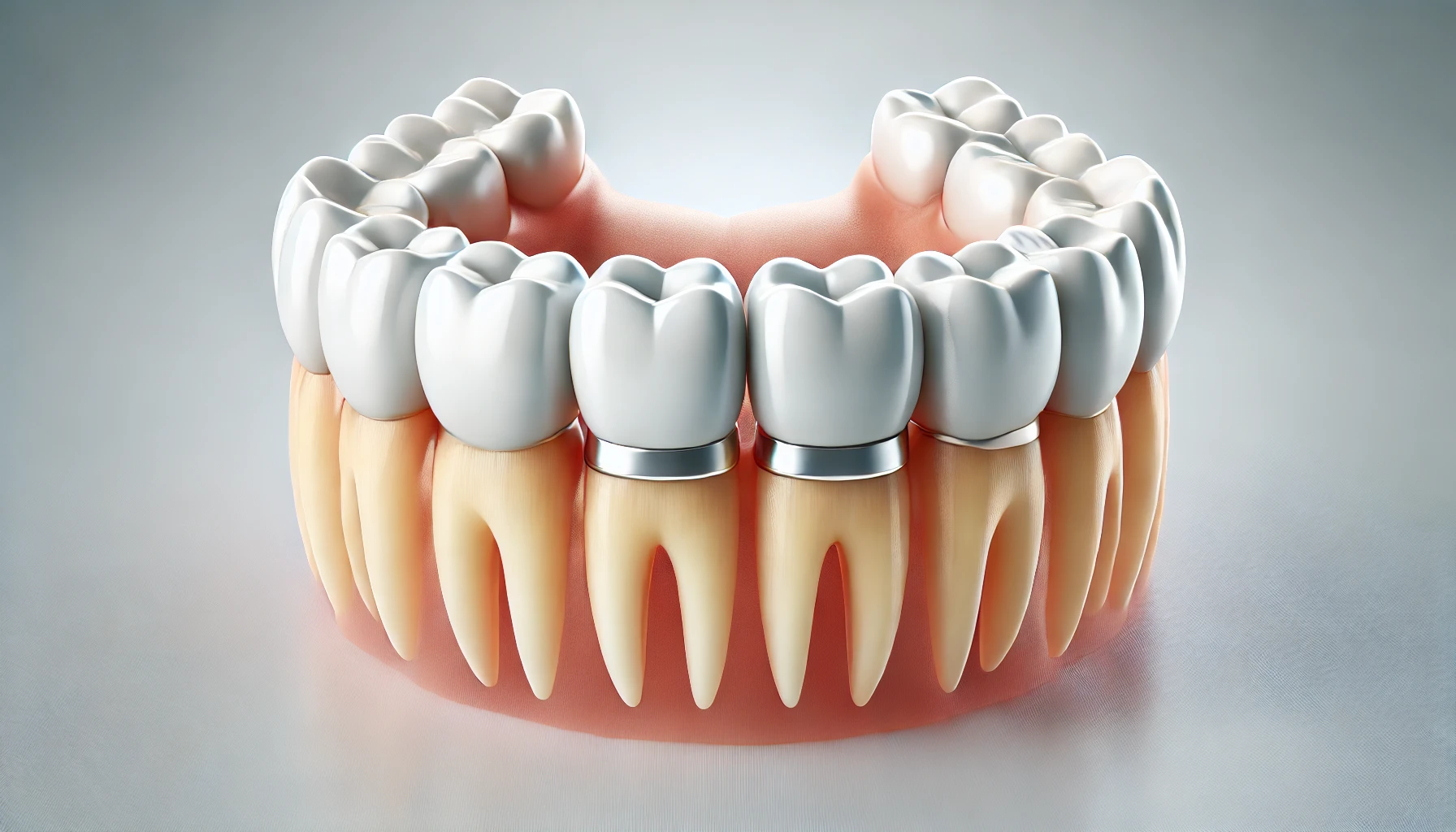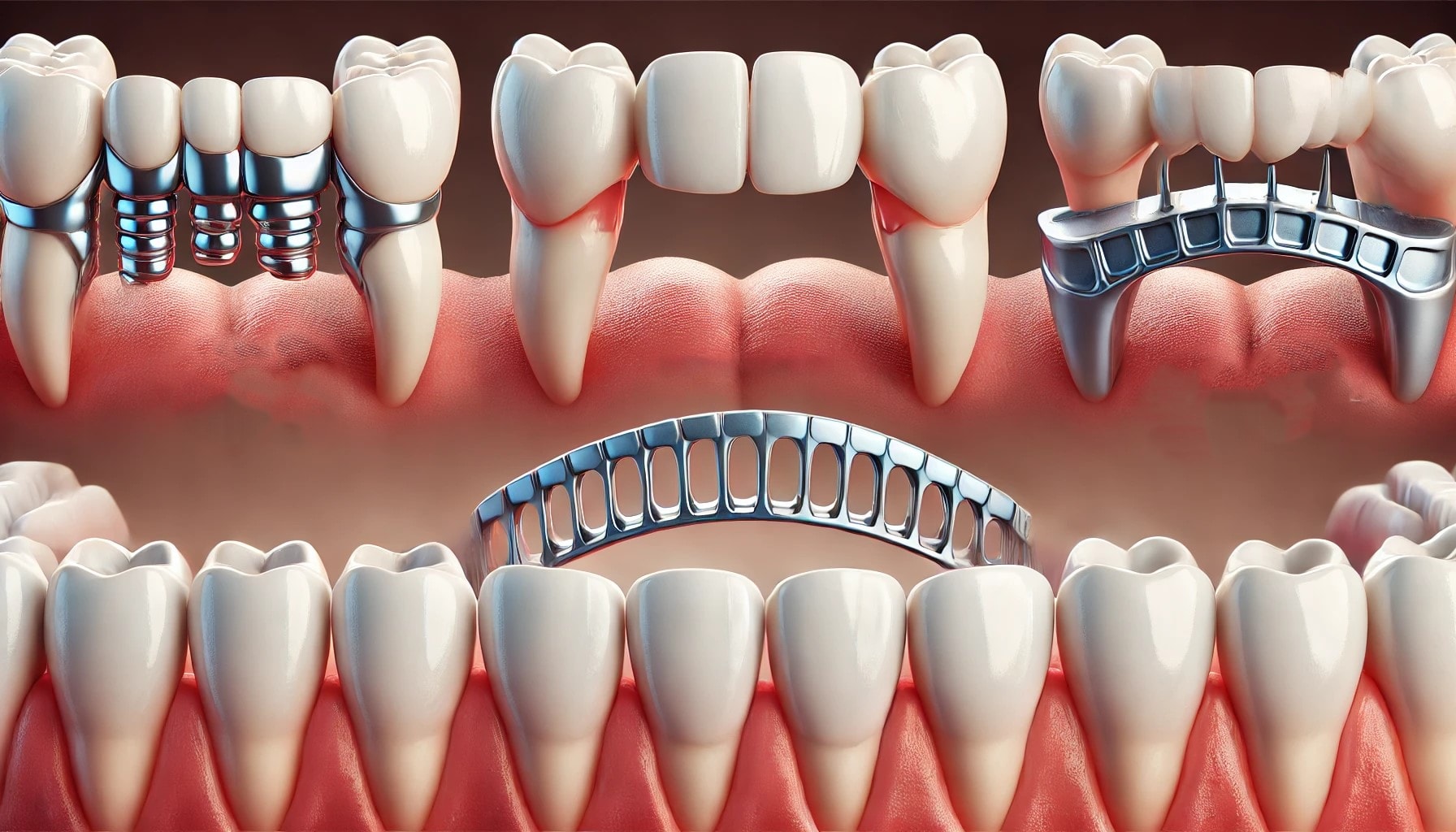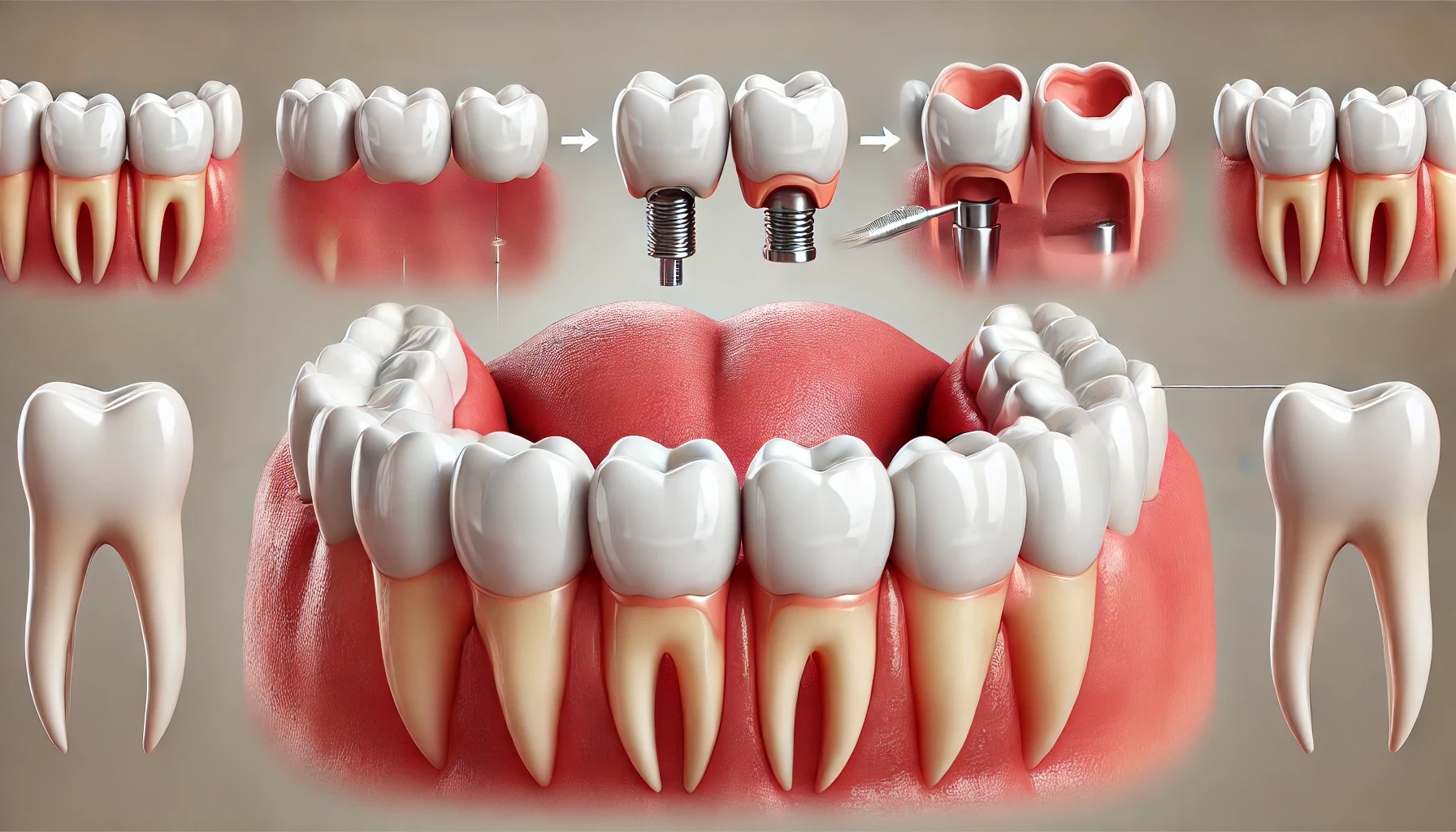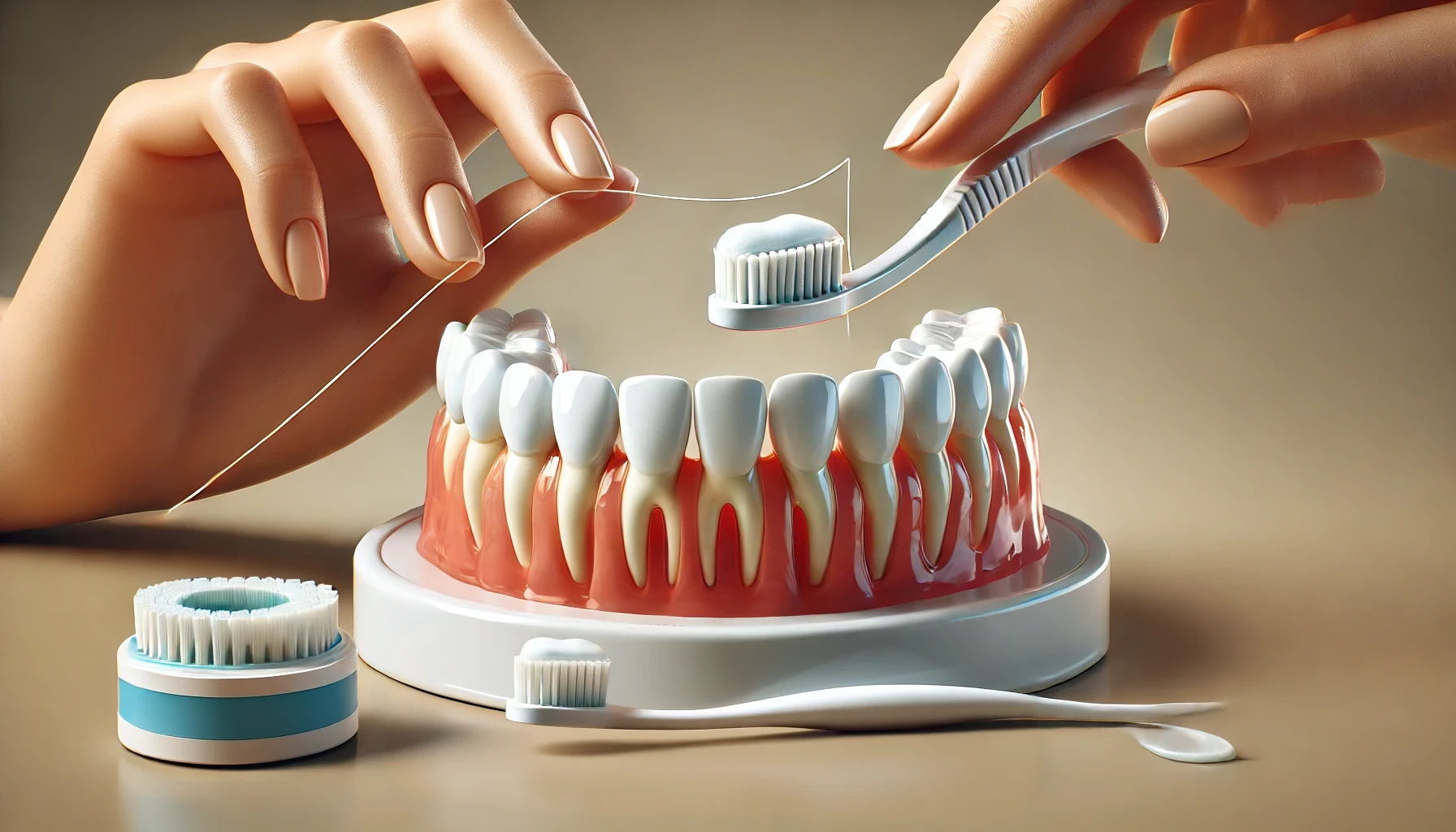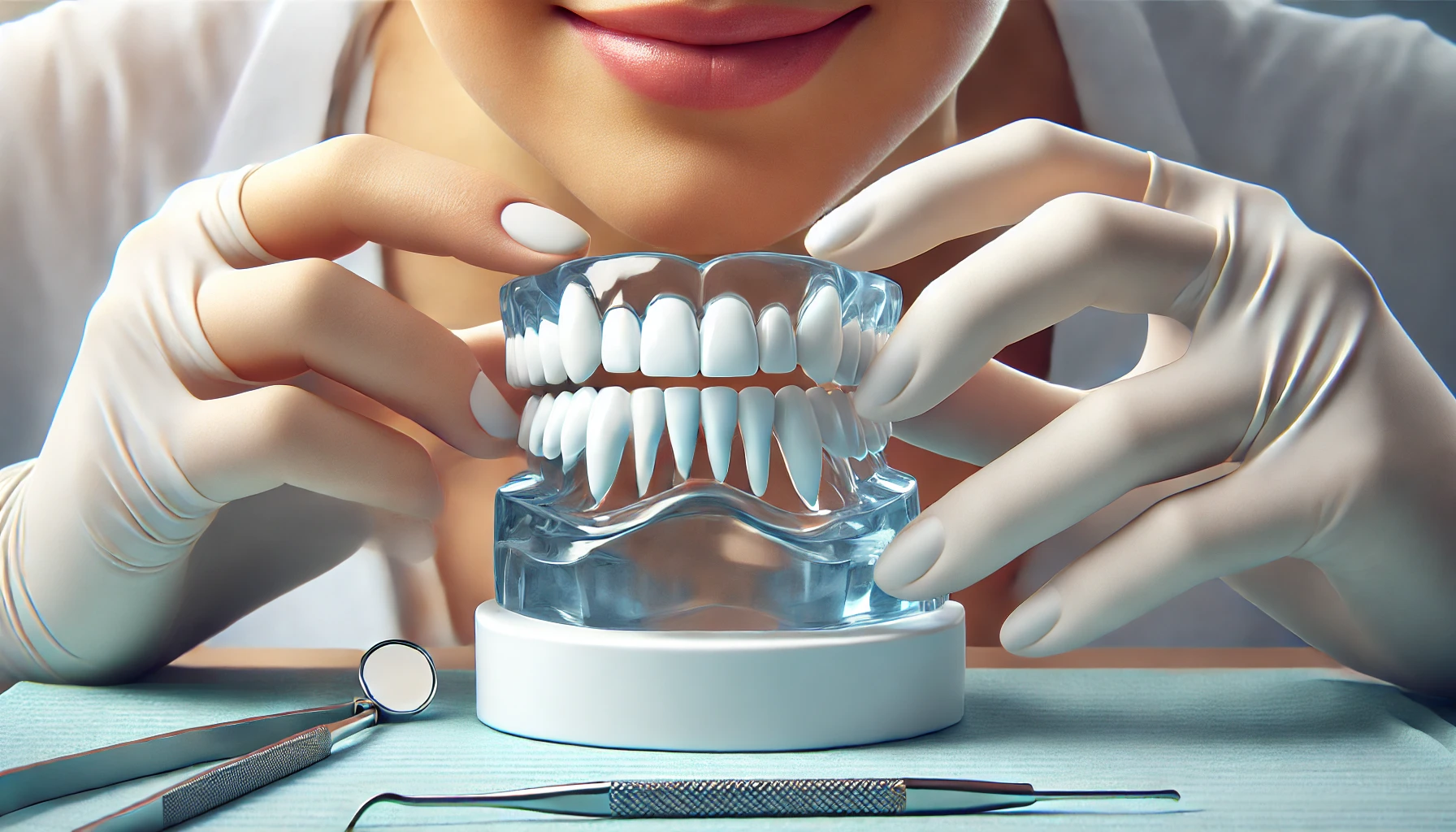Dental bridges are a reliable and long-lasting solution for individuals who have lost one or more teeth. Missing teeth can affect your ability to chew, speak, and smile confidently, while also causing alignment issues in your mouth.
Dental bridges work by filling the gap left by a missing tooth or several teeth, restoring both function and aesthetics. This article will cover how dental bridges work, their benefits, and whether they might be the right treatment for you.
What is a dental bridge and how does it work?
A dental bridge is a prosthetic device used to replace one or more missing teeth by bridging the gap between two healthy teeth or dental implants. It typically consists of one or more artificial teeth, known as pontics, which are anchored in place by dental crowns placed on the adjacent healthy teeth, called abutments.
The abutment teeth provide stability and support for the bridge, ensuring it remains securely in place. Dental bridges can be made from various materials, including porcelain, gold, alloys, or a combination, allowing for both durability and a natural appearance.
The process of fitting a dental bridge usually involves preparing the abutment teeth, taking impressions for precise fabrication, and permanently cementing the bridge once it’s ready, thereby restoring functionality and appearance to the patient’s smile.
Types of dental bridges: Which one is right for you?
There are several types of dental bridges, and the most suitable one for you will depend on your specific needs and preferences. The main types include traditional fixed bridges, cantilever bridges, Maryland bonded bridges, and implant-supported bridges.
- Traditional Fixed Bridges: This is the most common type of bridge, consisting of pontics fused between two crowns that are cemented onto the abutment teeth. This option is used when there are healthy teeth present on both sides of the gap left by missing teeth.
- Cantilever Bridges: As the name suggests, this type of bridge is supported by only one abutment tooth rather than two. It’s typically used in cases where there’s only one healthy tooth next to the gap.
- Maryland Bonded Bridges: Unlike traditional bridges, this type doesn’t require crowns on the abutment teeth. Instead, it involves bonding a metal or porcelain framework onto the back of crown adjacent teeth with resin cement for support.
- Implant-Supported Bridges: These bridges are attached to dental implants surgically placed in the jawbone, providing a stable and long-lasting solution for missing teeth.
Your dentist will evaluate your oral health and recommend the most suitable type of bridge for you based on various factors such as location of missing teeth, underlying bone health, budget, and personal preferences.
The dental bridge procedure: What to expect
Getting a dental bridge typically involves two or more visits to your dentist. The first visit will involve preparing the abutment teeth by removing a portion of their enamel to make room for the crowns. Your dentist will also take impressions of your mouth, which will be sent to a dental lab for fabrication of your custom bridge.
In the meantime, you may receive a temporary bridge to protect your exposed teeth and maintain proper function and appearance. Once your permanent bridge is ready, you’ll return for the second visit, during which it’ll be fitted and cemented onto your abutment teeth with adjustments made if necessary.
Plus, with proper care and regular dental check-ups, a dental bridge can last for 10-15 years or more!
How to care for your dental bridge for long-term success
Caring for your dental bridge is essential for its longevity and the overall health of your mouth. Start by maintaining a strict oral hygiene routine; brush twice daily with fluoride toothpaste and use dental floss or an interdental brush to clean underneath the bridge where plaque can accumulate.
Consider using a water flosser for added benefit. Regular dental check-ups and professional cleanings are crucial to monitor the bridge and surrounding teeth for any issues. Avoid hard or sticky foods that may loosen or damage the bridge.
Additionally, using a night guard can protect your bridge if you grind your teeth. By following these care tips, your dental bridge can provide long-lasting function and aesthetics, maintaining your smile for years to come.
Here’s how dental bridges can help replace missing teeth:
- Restore functionality: Dental bridges fill the gap left by a missing tooth, allowing you to chew and speak more naturally.
- Maintain proper alignment: Replacing a missing tooth with a bridge helps prevent the shifting of nearby teeth, maintaining your bite alignment.
- Support natural teeth or implants: Bridges are anchored by either natural teeth or a dental implant, depending on the patient’s needs.
- Custom-made for comfort and aesthetics: The bridge is designed to match the color and shape of your natural teeth, ensuring a seamless look.
- Long-lasting solution: When properly cared for, a dental bridge can last many years, providing a durable solution for missing teeth.
Summary
Dental bridges are an effective and long-term treatment for replacing missing teeth, restoring both the function and appearance of your smile. Whether anchored by natural teeth or a dental implant, bridges can help you chew, speak, and smile confidently once again. Regular care and dental visits ensure that your bridge remains in good condition, providing long-lasting results.
Questions and Answers
What is a dental bridge?
A dental bridge is a dental device used to replace one or more missing teeth by anchoring a false tooth between natural teeth or implants.
How does a dental bridge work?
A dental bridge works by using crowns placed on the teeth adjacent to the gap, supporting the false tooth (or teeth) in the middle.
What are the types of dental bridges?
There are traditional bridges, cantilever bridges, and implant-supported bridges, each designed for different situations depending on the number of missing teeth and the condition of the surrounding teeth.
How long does a dental bridge last?
With proper care, a dental bridge can last 10 to 15 years or longer, depending on factors such as oral hygiene and regular dental check-ups.
Can a bridge be supported by a dental implant?
Yes, an implant-supported bridge is a great option when multiple teeth are missing, as it provides additional stability without relying solely on natural teeth.
Is the bridge procedure painful?
The procedure is generally not painful. Local anesthesia is used during the preparation process, and you may experience minor discomfort after the procedure.
How do I care for a dental bridge?
Caring for your bridge involves regular brushing, flossing, and visits to your dentist to ensure the health of the surrounding teeth and gums.
Can a dental bridge improve my speech?
Yes, replacing missing teeth with a bridge can improve your speech, especially if missing teeth have caused issues with pronunciation.
Are there alternatives to dental bridges?
Yes, alternatives include dental implants and removable dentures, depending on your specific needs and preferences.
How do I know if a dental bridge is right for me?
Your dentist will evaluate your oral health, the condition of your surrounding teeth, and your preferences to determine if a bridge is the right treatment for you.





